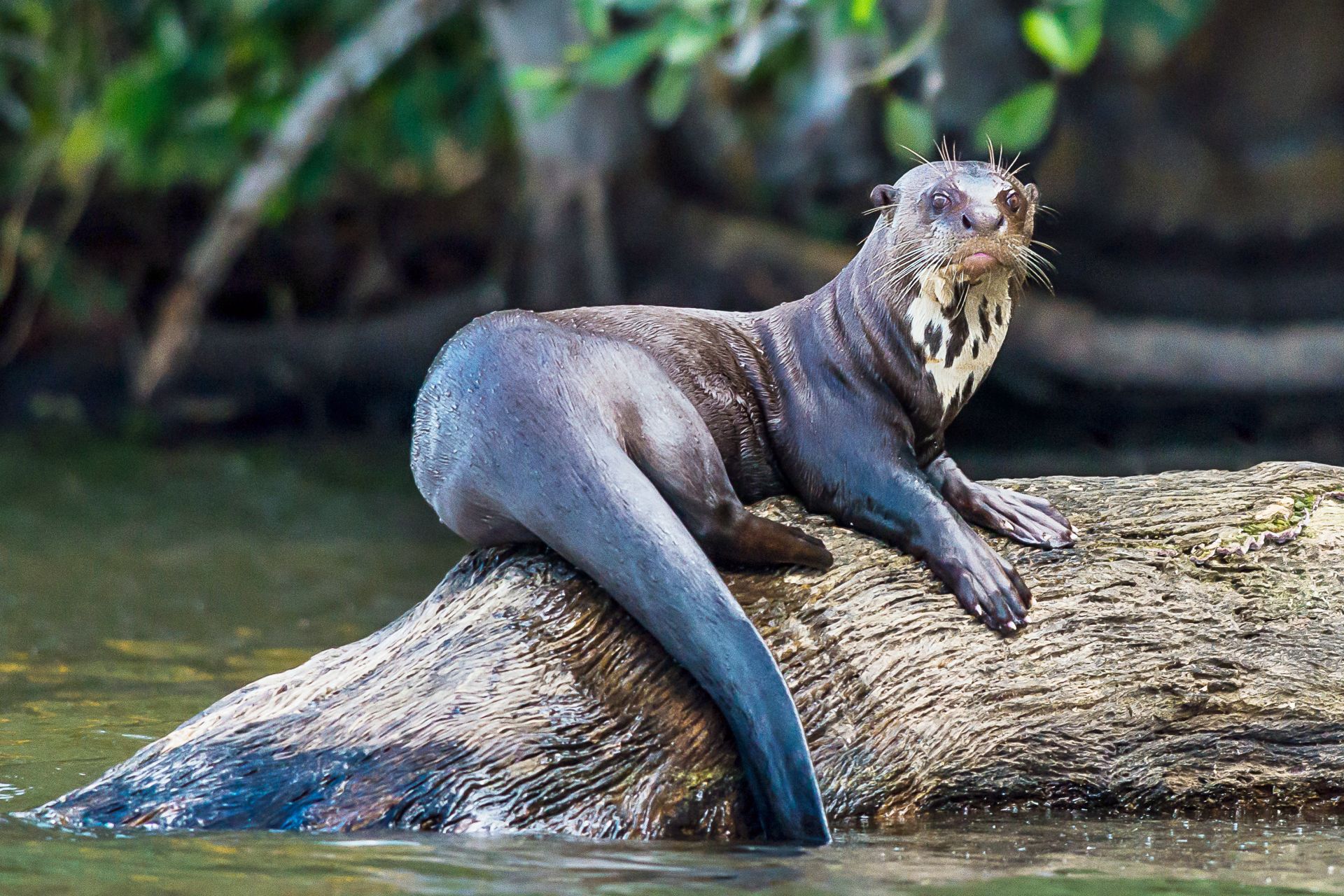
Sometimes, animal names mean nothing. Other times, they are named after their discoverers because nothing says “street cred” to a zoologist like seeing your own name, cleverly disguised as Latin, in a book about frogs. And, it’s the least we can do for zoologists because their salaries are usually commensurate with their relevance and importance… which means they are usually out in the jungles because their house and car have been foreclosed on; and, their engineer friend already has three other zoologists sleeping on his couches…
But, the giant otter (pteronura brasiliensis) lives up to his name in a truly startling way. Whereas the sight of a wild ferret is kind of disturbing and the sight of a domesticated ferret is enraging, the sight of a weasel-like animal as long as the average North Korean is tall, is enough to make you reevaluate your decision to spend your vacation in the Amazon basin. These carnivores are just one saddle away from taking Aqua-man to Lex Luthor’s secret fresh-water fortress under the Amazon River.
You could say that a giant otter looks like a slim sleek seal; you could also say that a seal looks like a fat giant otter. You could say that I was with you all last weekend and if you’d say it in court, I’d be eternally grateful. A giant otter weighs over fifty pounds and that is way more interesting than any vandalism I may or may not have been perpetrating…
 Giant Otters live in north central South America, which, if you parse that location, ends up being in Nepal for some reason. They prefer to live in fresh water, but if a real estate agent is aggressive enough, he can usually talk one into buy something near the highway. They live in family groups of up to eight members and the group centers itself around the dominant breeding pair because there’s nothing else to watch on a Saturday night.
Giant Otters live in north central South America, which, if you parse that location, ends up being in Nepal for some reason. They prefer to live in fresh water, but if a real estate agent is aggressive enough, he can usually talk one into buy something near the highway. They live in family groups of up to eight members and the group centers itself around the dominant breeding pair because there’s nothing else to watch on a Saturday night.
P. Brasiliensis are carnivores… like all good-hearted mammals. They eat piranha and piranha have been known to return the favor. They’ll take a catfish if it is offered. If no fish are available, they’ll settle for a small caiman or snake. This was all determined by zoologists by analyzing the feces or “scat” of the giant otter. This might seem humiliating for zoologists but they’ve long since lost the ability to feel emotions like shame or pain.
Did You Know: Held by the tail, a giant otter can be thrown twice as far as the domestic cat.
The giant otter has a complex society… at least as complex as eight members can make  it. Back when I had eight friends, it could get pretty complicated… even after I’d thoroughly examined their scat. P. Brasiliensis defend their dens cooperatively… although the cooperation is usually restricted to the other otters in their group. For the predator, they make things as difficult as possible. Also, they do fight other giant otters from other family groups. Their territories are clearly scent-marked so the other otters really had it coming…
it. Back when I had eight friends, it could get pretty complicated… even after I’d thoroughly examined their scat. P. Brasiliensis defend their dens cooperatively… although the cooperation is usually restricted to the other otters in their group. For the predator, they make things as difficult as possible. Also, they do fight other giant otters from other family groups. Their territories are clearly scent-marked so the other otters really had it coming…
P. Brasiliensis are endangered like every other animal but the coyote and cockroach. Their numbers fell dramatically when natives realized that the animals’ pelts could be removed after death and sold to traders. Oddly enough, where the giant otters are, there are a lot of them. Actually, they’ve done quite well for themselves despite jaguars, caimans and electric eels. The big danger now is the loss of habitat due to logging, farming and mining. The giant otter could soon be extinct due to the fact that he has nowhere to live…
…very much like the zoologist…
